The Black Dog
But, imagine the horror if you suspected that growling dark shape advancing down the lane towards you in the evening gloom was not even of this mortal world! A savage hellhound intent in capturing unwary souls, or a dire portent of doom to those who saw it. This was why people would whisper stories about the "gurt dog" in Somerset, the Barghest in Yorkshire and Northumberland, or Black Shuck in Norfolk, Suffolk and Cambridgeshire. Here in Lincolnshire it was more simply identified as "The Black Dog".
Supernatural or spectral backs dogs are long recorded feature of British folklore. Generally regarded as sinister or malevolent, often accused of being associate's with the Devil. While some were free to wander as they chose, others are tied to specific locations, ones usually with an unpleasantly bloody history such as the scene of a murder, or a site where a tragic suicide had taken place.
The Black Dog's most notable breakthrough into popular culture would be delivered by writer Arthur Conan Doyle, who in 1901 upon returning to England form South Africa, and needing time to recover from enteric fever he had contracted while travelling, took a holiday in Cromer. It was between dinners at the Links Hotel and rounds of golf with his friend Bertram Fletcher that Doyle would hear tales of the local hound of legend; Black Shuck. This would inspire him to begin possibly the most famous of story in the Sherlock Holmes cannon.
However when writing the Hound of the Baskervilles, Doyle would transport the fearsome hound from Norfolk to the moors of Devon. Well known as the story may be, his descriptions of the terrifying murderous hound are still effective.
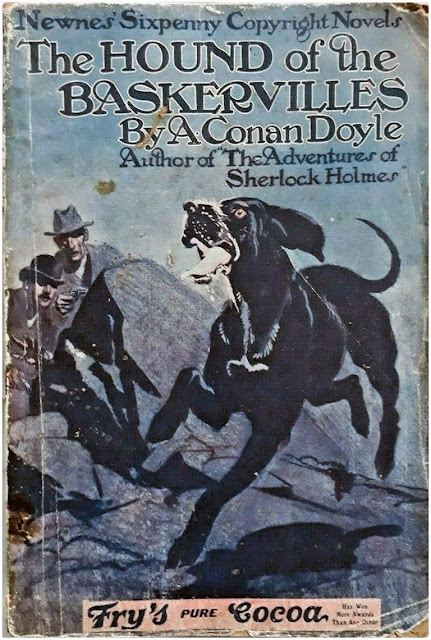 |
| Cover of George Newnes 1912 sixpenny edition of The hound of the Baskervilles. |
The black dogs of Lincolnshire though, for the main part seem to be benevolent beasts, and while their appearance (often described as being as big as a calf, one account describes the creature as having HUGE eyes like lamps) might frighten, they seldom seem to trouble the witnesses. Often choosing to lope companionably alongside as a short term walking partner
In 1938, Lincolnshire folklorist, Ethel H. Rudkin published THE BLACK DOG, in Vol 49 of the journal of the Folklore Society. Adapted from an earlier talk and several decades of collecting people's accounts across Lincolnshire, it stands as the best overview we have of the phenomenon in the county. In it she says of the people who she spoke to.
" The people who can supply these details are of the hard-working, normal, strong-minded type, who can tell you quite truly and simply what they have seen, because there is no doubt about it in their minds. They know that what they have seen is not a real dog--they will tell you as much. "
Meetings with the black dog are often brief, oddly many stories share a similarity where the dog appears quite suddenly popping through a gap in a hedge or a gateway. Some people commuting a certain path might see it almost semi regularly, and in these cases the dogs seems to follow the same fixed route almost like a recording.
" A young man cycling home from Leverton to Wrangle (this is in the Boston area) often saw the Black Dog rush out of a drove-end behind him and lope along to another lane which it turned down. The Dog usually appeared near a long, deep pond surrounded by trees; but he did not always see it when he went that way. "
In Algarkirk, a village a few miles south of Boston. The lane that runs by the Church of St Peter & St Paul is haunted by a spectral dog, and again, it seems the witness, a Mrs. B. (Ethel Rudkin always slightly anonymised her contributors, a source of some frustration) had seen it enough times to be familiar with its route.
" At Algarkirk, Mrs. B., who lives there, has seen the Black Dog near the three trees that grow close to the church. It is tall and thin, with a long neck and pointed nose. It leaps into the road and runs before the spectator, leaping back over another gate farther on. It always comes and goes on one's left. "I once heard the leaves rustle as it jumped through," said Mrs. B. "
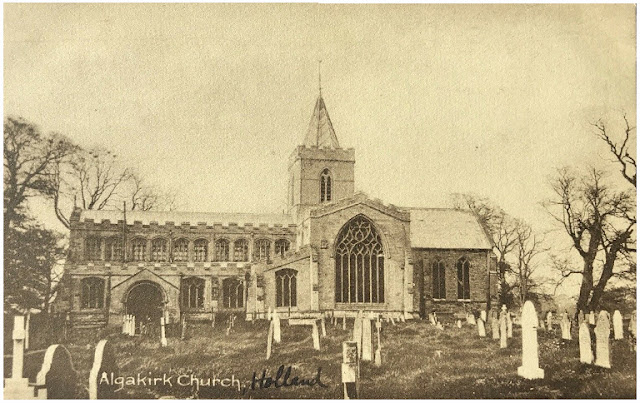 |
| An early 20th C photo postcard of Algarkirk Church. The trees where the dog appeared may be those seen on the right, behind the Church. |
In fact some sightings of the mysterious black dogs, would be so consistent that certain landmarks where the Dog would appear or vanish could be pointed out by locals.
"At East Stockwith, the Dog was often seen; he used to disappear at a certain stile on the Trent bank."
Some appearances attracted considerable local attention and so areas would be well known as a place where you might meet with "The Dog" One of these was Bell (or Belle) Hole Farm, located a mile west of Kirton in Lindsey.
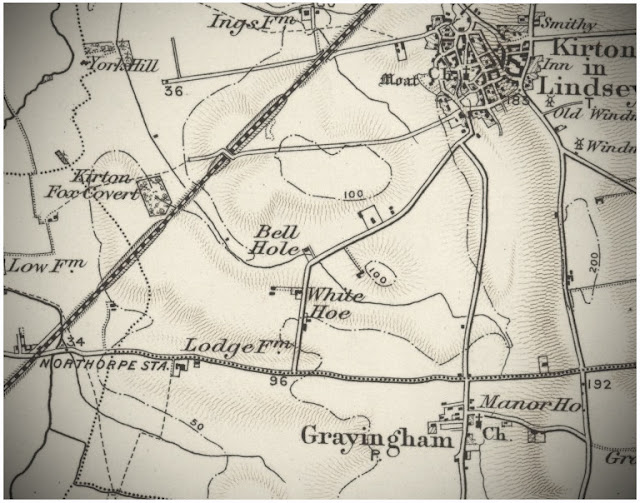 |
| Bell Hole farm and the road to Kirton in Lindsey shown here on a first edition OS map. |
In her article, Ethel Rudkin suspected the name of the farm is possibly a corruption of Belle Eau, as there are many springs in that area. The Dog is said to live in a hole in the bank of a stream and faggots are, or at least were, kept over the entrance to this hole. If the Dog had been seen overnight, then next morning the hole would be found to be open. Normally this Dog would only seen by one person, the lone traveller walking along the stretch of road up to Kirton in Lindsey, however an old man and his wife both saw him one night, and to their horror watched as he fell into step beside them as they walked along the moonlit road towards home.
The North West corner of the county, around East Stockwith (West Lindsey) and the Trent side, finds us in a landscape with not one but two ghostly Black Dogs in the same parish. An unnamed local to the area reported,
" There was said to be a Black Dog down Intake Lane, while another one ' roamed all ower'd fields at neet (night) time.' "
Time of day is no barrier to seeing a black dog. They are just as happy manifesting in hours of daylight as well at night. In fact their colour (or lack of it) almost aided their visibility, as one farm foreman told Ethel Rudkin that.
"No matter 'ow dark a night it is, you can allus see the Dog because 'e's so much blacker,"
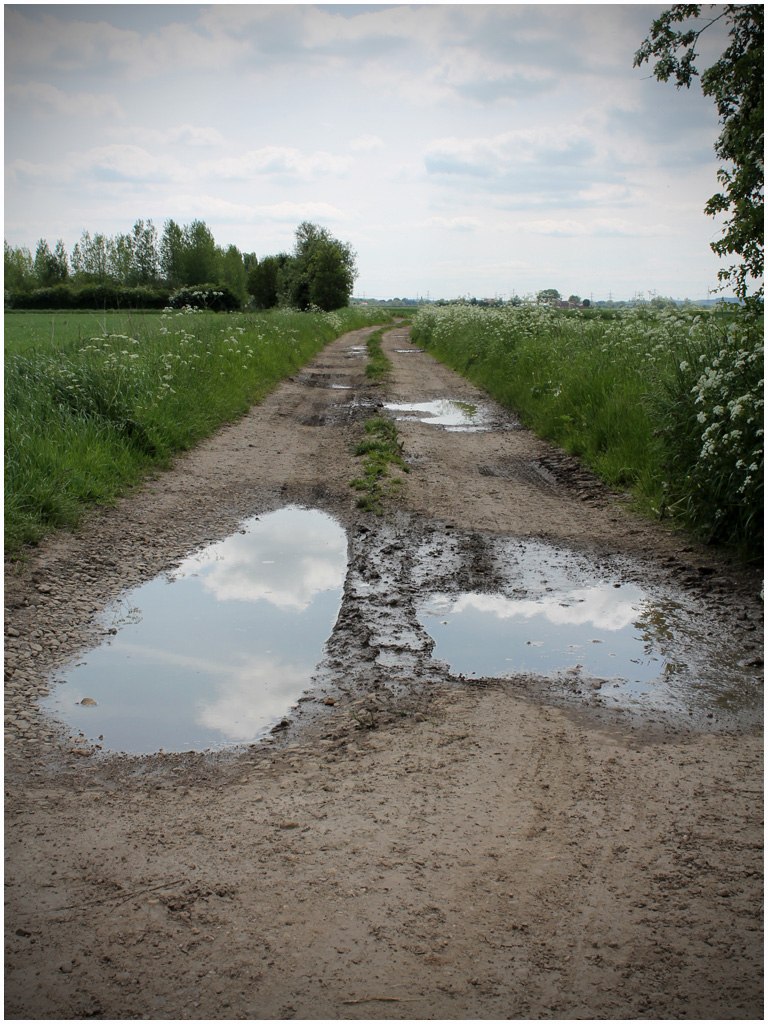 |
| North Intake Lane, Owston Ferry. Where one of the two dogs could be seen. Photo by J. Hannan-Briggs on Geograph |
Despite their fearsome appearance though it seems some people at least looked kindly upon our Lincolnshire Dog spectre. Indeed at times it seems to have taken on an almost protective role. An account from the early 1900s, around Willoughton, North of Lincoln attests.
" Mrs. L., of Willoughton, says that 20 (?) years ago, her friend Mrs. C., who lived up at Kennington (a farm on the top of the hill) had pneumonia, and Mrs. L. was anxious to see how she was, so she went up to see her one evening. She could not leave very early as she had the waggoners to see to and give them their tea, so it was dusk when she finally went up the hill. Half way up, just below the big ash tree on the south bank, there was a hole in the hedge, which made a short cut into the allotments; out of this hole came a large black shaggy dog with a long tail that curled slightly, like a shepherd dog's. Mrs. L. likes dogs, and she was pleased when he followed her; she spoke to him but did not " make " of him, as she knows better than to touch a strange dog. He went with her up the hill and on to Middle Street, but left her at the top gate of the allotments. It was ten o'clock when she returned, and she felt rather nervous coming all that way alone, but Mr. C. came a little of the way with her, then he returned. When Mrs. L. came past the top allotment gate, the Dog came out and joined her, trotting with her until she came to the hole in the hedge half way down the hill, where he left her. She was so glad of his company coming back, because she felt that he protected her. It was more than two hours between her going up the hill and returning, and she thought it " nice of the old Dog to wait for her. "
It seems that one of the characteristics of the Black Dog in Lincolnshire is that it required no superstitions mind to conjure it up. It would it seem at times gladly manifest to the most level-headed and stoutly devout of souls and indeed appears to want to help when the lonely traveller was facing possible peril.
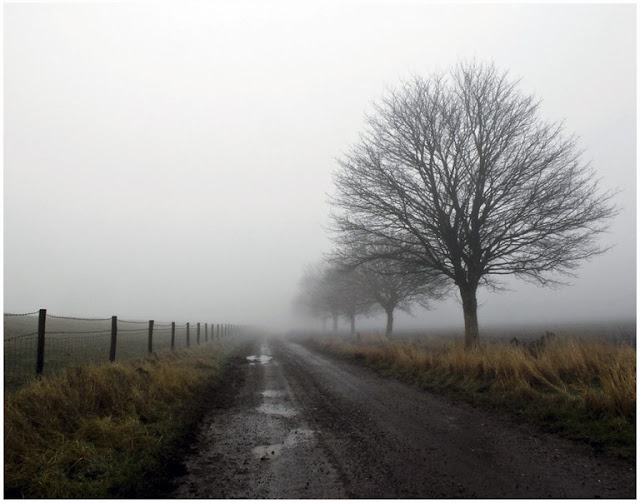 |
| Farm road along the old sea bank between Butterwick and Leverton. Photo by Chris Borrel on Flickr. |
Mr. C., of Boston, writes:
" My father was a Lay Preacher for many years (attached to the Methodist Church) and was a man of exceptional physique and an iron nerve; fear was almost unknown to him. I have many times known him walk upwards of 20 miles on a Sunday to fulfill his appointments. He was returning home one Sunday evening in the depth of winter after taking one of these appointments in the Alford circuit, and on his way home he had to go down what was then known as Mumby Long Lane. I am inclined to think it was between Hogsthorpe and Willoughby. On approaching the Lane, a most unusual and uncanny feeling took possession of him, one that he had never experienced before. However, he had to take the Lane, and almost immediately he entered it, apparently from nowhere, came a large Black Dog, and walked by his side. Though possessed of such wonderful nerve, I have frequently heard him say that he would rather deal with a man at night than a dog, so he tried to get rid of it, but it continued to walk by his side until the end of the Lane was reached, and then vanished as mysteriously as it came. He always maintained that the dog was providentially sent that night to protect him from something or someone who had no good intentions towards him. "
(November 1937.)
This story neatly underlines how in the pre-motorcar age, for the people who lived in the scattered hamlets and and farmsteads of Lincolnshire, work or social necessity meant long journeys may be taken on foot often in unfavourable weather or failing light. The consequences of chance meetings on the road, doubly so in the bleak and empty landscapes of the fenland could have terrible outcomes if ill-intent existed in one party. The last public execution in Lincoln castle was only in 1859, marked the end of a long list of similar judicial executions in the county for roadside robbery and violence. This one the last to be viewed by the curious public of Lincoln saw the "turning off" of two men, found guilty of a particularly vicious roadside robbery and murder of a sixty four year old man on the fen road approaching Sibsey.
But now in the motorised 21st C, where travel between towns and villages to and from work, is almost exclusively done by car or bus are we robbed of the opportunity to cross paths with our hound of legend? Does the black Dog still pad the footpath and hedgerows around Lincolnshire? Its huge eyes now simply reflecting the lights from our car headlights as we pass by unwittingly.
If you or maybe your family have had an experience with, or heard a story about a mysterious black Dog in Lincolnshire, or know locations where one might have been seen. Please leave a comment below, or you can email us at boggartstones@gmail.com
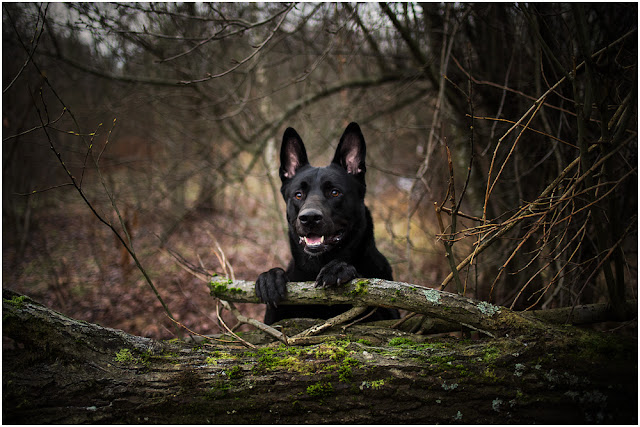

Comments
Post a Comment